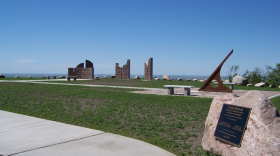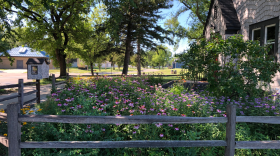-
In 1907, the state of North Dakota designated the “Wild Prairie Rose” as the North Dakota State Flower.
-
Were there chimney swifts before chimneys? Of course! It might surprise you, but historically, chimney swifts nested in hollow trees, cliff faces, caves, and the like. But things changed for the chimney swifts when Europeans settled the area and built homes with chimneys.
-
Are you enjoying these long summer days? The days have been lengthening since the winter solstice back in December. And the longest day of the year, the summer solstice, is coming up soon.
-
If you haven’t been to Lake Metigoshe State Park, this summer should be a good time to go. Lying around fourteen miles northeast of Bottineau, the park is tucked away on the eastern shore of Lake Metigoshe’s north lake. It is a great place to enjoy a little natural North Dakota.
-
The northern lights have been unusually active over the past few months. And it appears we may be in for more frequent shows over the next few months.
-
Some birds are known to lay their eggs in another bird’s nest. They then go off while the “host” parent, or parents, get stuck with all the parental care of these young, often at the expense of their own offspring. And brown-headed cowbirds are notorious for this practice, called brood parasitism.
-
Wood warblers are known for their bright and interesting colors. They’re a bit smaller than the sparrows we commonly observe. Most are on their way north to the coniferous forest to nest, but some species will stay and nest here in North Dakota. If you have noticed one of these small birds has a prominent yellow rump patch, it is a yellow-rumped warbler. They are one of the more commonly observed wood warblers we see during the spring migration.
-
We hear about sightings of whooping cranes in the state during their spring and fall migration, but how fortunate to be able to see these magnificent and rare birds?
-
Gardening and landscaping with native plants can provide aesthetically pleasing environments, provide plants for native pollinators, reduce our carbon footprint, help preserve native biodiversity, and produce more environmentally sound and sustainable landscapes.
-
It seems that every spring when the ice comes off ponds and marshes it is not long before these bodies of water are the source of a cacophony of croaks, quacks, trills, and chirps from frogs and toads.
Play Live Radio
Next Up:
0:00
0:00
Available On Air Stations










